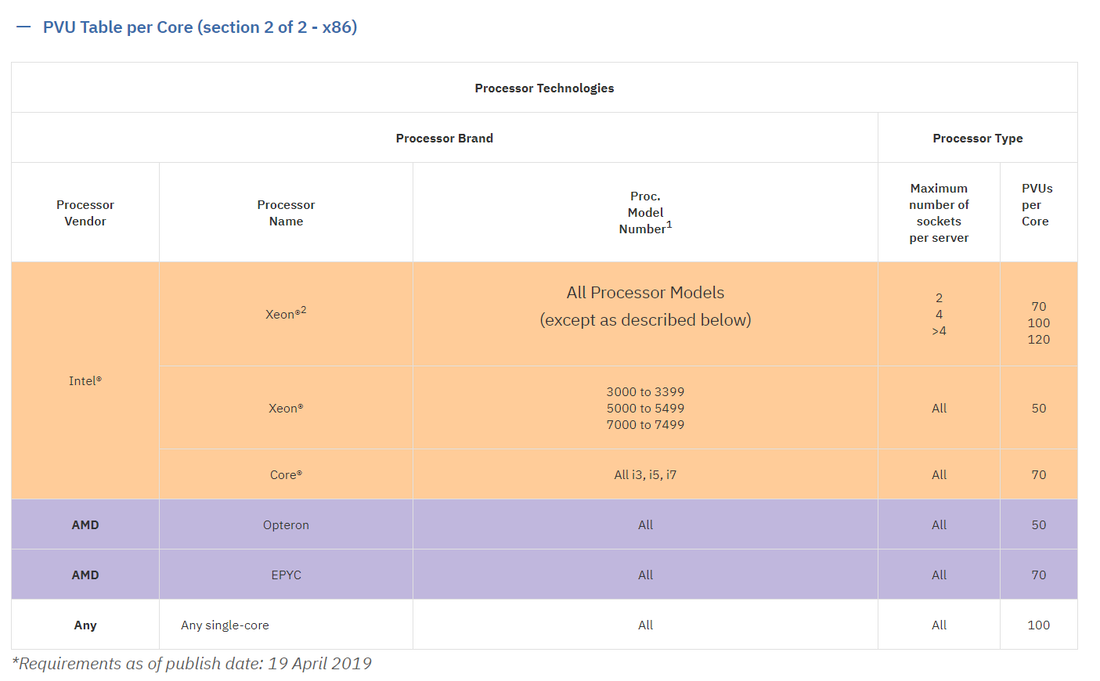Could the Change to IBM's PVU Core Table Signal a Refreshing SHIFT in Sub-Capacity Licensing? While some vendors prefer to wallow in the mire of antiquated and irrelevant licensing regimes others seem to be moving ahead with revised models that provide clarity and ease in establishing your licensing and compliance position. A case in point - IBM - who flagged a rethink with a shift from the messy PVU to Virtual Processor Core metrics (example in the hyperlink). Starting April this year the x86 PVU Table has been culled down to just 6 entries with the Intel category now much simplified for the Xeon chipset, basically all determined by the number of sockets at 2, 4, and >4 (with the lower models in the listed ranges remaining at 50 PVU's): There is however one complication - Symmetric Multiprocessing Servers - which you need to factor per definition below: The PVU requirement for the Intel processor technology indicated is dependent on the maximum number of sockets on the server. If sockets on two or more servers are connected to form a Symmetric Multiprocessing (SMP) Server, the maximum number of sockets per server increases. Example:
Good news from our perspective - anything that removes ambiguity is welcomed (with reference to the linked post at the start of this blog: "oh but you have to count the Physical cores, not virtual, on the Host, in fact all Hosts in the complex, actually in the Data Center, well let's say the Cloud then, so basically ... ... everything, everywhere")
0 Comments
|
<
>
Archives
November 2023
|
|
Unravelling license complexity for Business
ACN 623 529 751 |
Privacy Policy | Terms of Use
|

